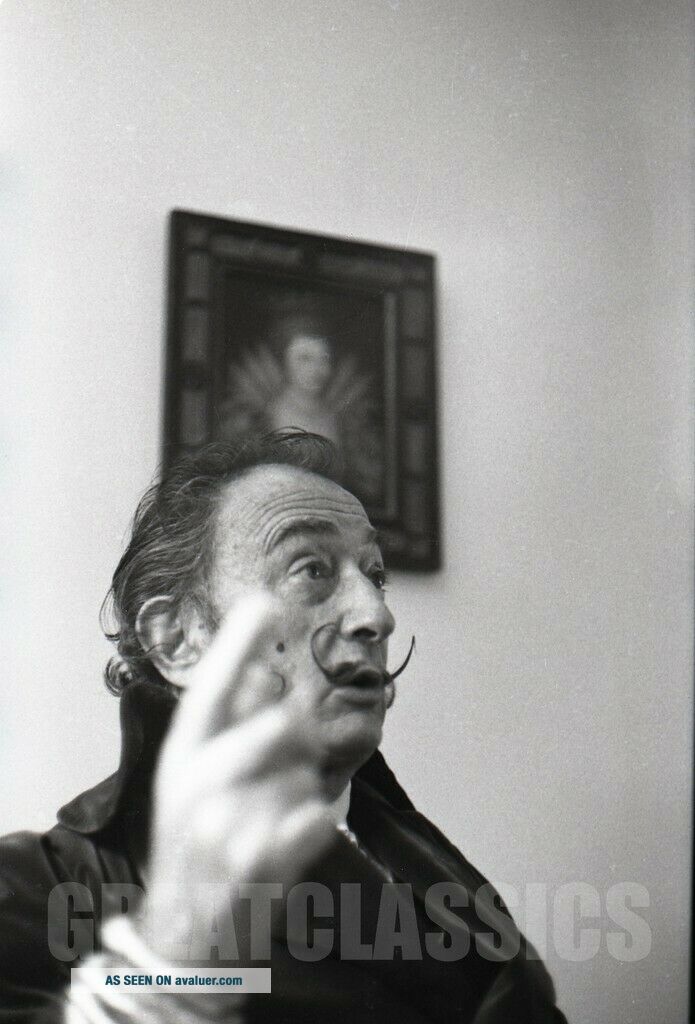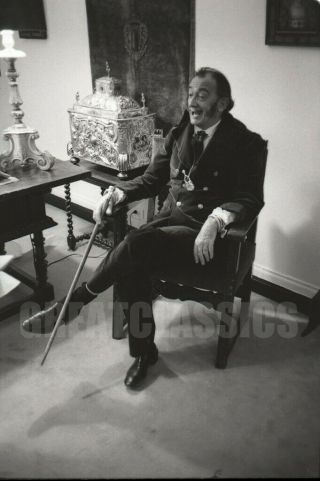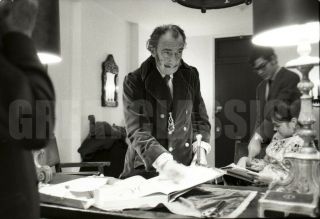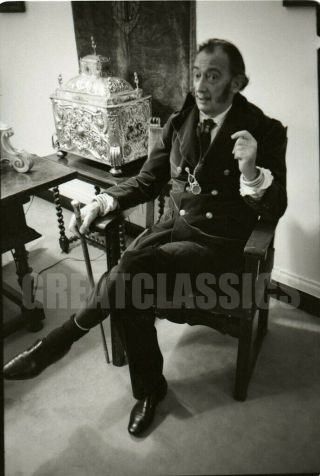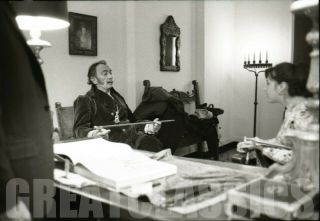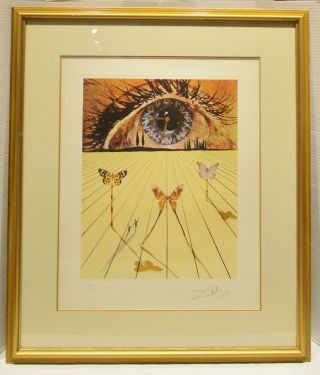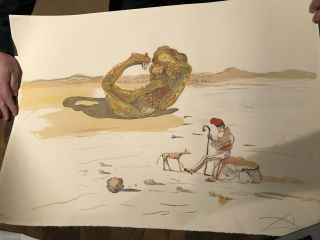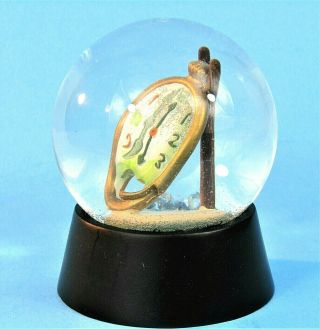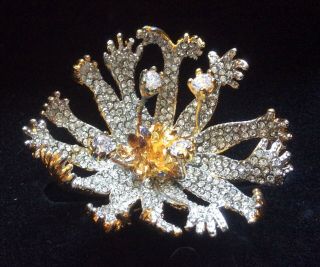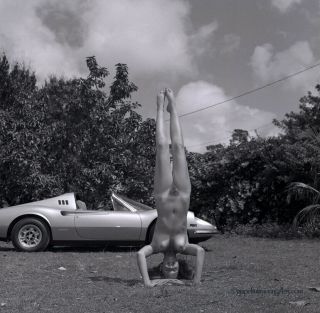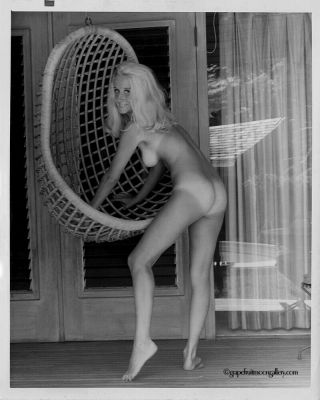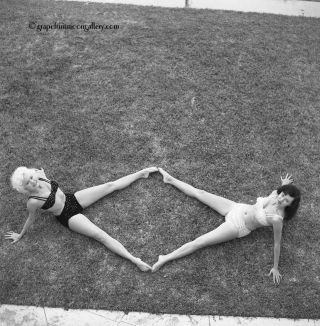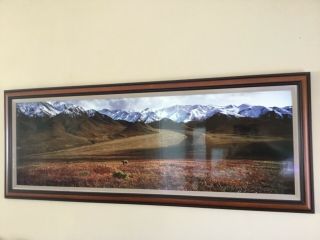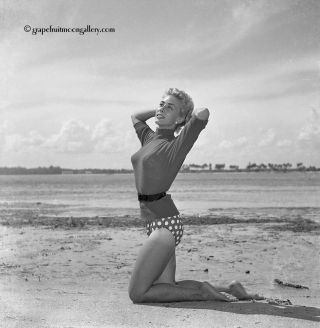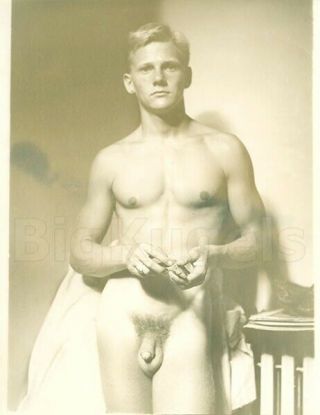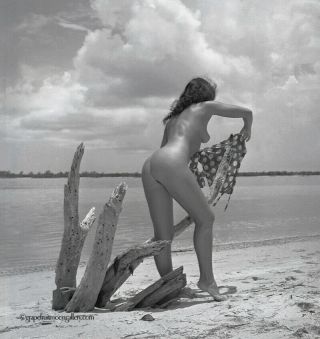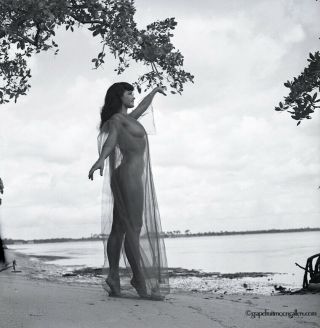SALVADOR DALI CARLOS ALEMANY SURREALIST JEWELER ' 60s CAMERA NEGATIVE PETER BASCH
Item History & Price
Mr. Alemany is famous for translating Mr. Dali's fantastic visions into physical specimens of precious metals and gems, chiefly for exhibition.
A small hole punched in the right perforation by the photographer identifies this as one of the strongest portraits from the shoot.
This is the original negative (film) that was in the photographer's camera when the portrait was taken and is therefore the only one of its kind in existence. (Please note this listing is for a camera negative, not a photograph. The scan is of its positive view.)RIGHTS: The PETER BASCH FAMILY TRUST is the sole and exclusive copyright owner of the listed image(s). No rights are included in this offering. - SIZE: 35mm- TONE: B&W- CONDITION: Fine._______________________________________________________________ CONDITION GRADING Excellent: Very nearly pristine, with no more than trivial flaws. Very Fine: One or two minor defects and only the slightest handling wear. Fine: Minor flaws, with slight handling or surface flaws. Very Good: Slight scuffing, rippling, minor surface impressions. Good: Visibly used with small areas of wear, which may include surface impressions and spotting. Fair: Visibly damaged with extensive wear. SHIPPING TERMS - I ship all items using, what I call, triple protection packing. The photos are inserted into a display bag with a white board, then packed in between thick packaging boards and lastly wrapped with plastic film for weather protection before being placed into the shipping envelope. - The shipping cost for U.S. shipments includes USPS "Delivery Confirmation" tracking. - I am happy to combine multiple wins at no additional cost. Please wait for me to issue the invoice before making payment. PAYMENT TERMS - Please pay within three (3) days of purchase. - I reserve the right to re-list the item(s) if payment is not received within seven (7) days. - California residents - please wait for me to adjust the invoice to include California Sales Tax of 7.5% and 9% for Los Angeles residents. CUSTOMER SERVICE - I will respond to all inquiries within 24 hours. ________________________________________________________________ PETER BASCH (1921-2004) was a German/American glamour photographer who captured thousands of images of the most prominent stars of the 50s and 60s. Peter Basch was born in Berlin, Germany, the only child of Felix Basch and Grete Basch-Freund, both prominent theater and film personalities of the German-speaking world. In 1933 the family came to New York due to fears of rising anti-Jewish sentiment and laws in Germany. The family had US citizenship because Felix's father, Arthur Basch, was a wine trader who lived in San Francisco. After moving back to Germany, Arthur Basch kept his American citizenship, and passed it to his children and, thence, to his grandchildren. When the Basch family arrived in New York in 1933, they opened a restaurant on Central Park South in the Navarro Hotel. The restaurant, Gretel's Viennese, became a hangout for the Austrian expatriate community. Peter Basch had his first job there as a waiter. While in New York, Basch attended the De Witt Clinton High School. The family moved to Los Angeles to assist in Basch's father's career, during which time Basch went to school in England. Upon returning to the United States, Basch joined the Army. He was mobilized in the US Army Air Forces' First Motion Picture Unit, where he worked as a script boy. After the war, he started attending UCLA and started taking photographs of young starlets working with other photographers and film studios. His mother asked him to join her back in New York after she and his father decided that Basch should be a photographer and they obtained a photography studio for their son. For over twenty years, Peter Basch had a successful career as a magazine photographer. He was known for his images of celebrities, artists, dancers, actors, starlets, and glamour-girls in America and Europe. His photos appeared in many major magazines such as Life, Look and Playboy.The Peter Basch Collection includes iconic images of all the major midcentury stars, from Europe and America. These masterful images are a window onto a time we cannot forget, when movie stars stepped out of the studio’s control, and we began to see these larger-than-life performers as full, three-dimensional personalities. Basch’s images capture the heart and spirit of these glamorous performers. Taking pictures in natural light, out in the world, we see these stars as full human beings, not the carefully made-up, studio-approved icons of oldfashioned Hollywood. Basch was able to capture the moments of a human being’s spirit, their mercurial reactions, all the facets that made these magnetic individuals the stars they were. Basch authored and co-authored a number of books containing his photographs including: Candid Photography (1958 with Peter Gowland Basch and Don Ornitz Basch) Peter Basch's Glamour Photography (A Fawcett How-To Book) (1958) Peter Basch photographs beauties of the world (1958) Camera in Rome (1963 with Nathan and Simon Basch) Peter Basch Photographs 100 Famous Beauties (1965) The nude as form & figure (1966) Put a Girl in Your Pocket: The Artful Camera of Peter Basch (1969) Peter Basch's Guide to Figure Photography (1975 with Jack Rey) Thoughts on Peter Basch by his daughter: "My Father, Peter Basch, saw. He looked and he saw. He taught me to see. He taught me to listen and hear. We used to play a game when I was little. He’d say, Michele, look at the street then look at me, what did you see? I would list the cars, red, black, navy; people, fat, tall, thin; children, parents; trees and plants. He would add the detail. A blue car with New York plates, a black car with New Jersey plates. The people were not just tall or small, thin or fat, they wore coats or sweaters, they laughed or were sad. The trees had leaves, were close together, the green was dark, vivid, the sun playing with the shadow. My Father saw. He captured in his mind and on film the unexpected moment in time, the interaction between two people, the look, the thought, the breath that punctuated the decision. My Father was one of the great romantics. He had a true love and appreciation of beauty in its purest form. We would talk about BEAUTY and her differences: natural, Hollywood, young, old and the beauty of communication, interaction, the Beauty of the moment. He recorded the breath in time on film: two ladies in Paris reading the paper, a Dachshund looking around the corner, a chair in front of the Eiffel Tower. My Father saw the thought and seized it for posterity. My Father understood the language light speaks to shadow. He showed me how the sun plays with dark. His favorite moment was at Sunrise when the shadows were long and soft. He saw every hue from white to black and everything in between. He understood the language, taught and published books on Light and Shadow, Form and Figure. I traveled through Europe with my Father. I was his assistant! And proud of it! I was the camera person! Changed the film, made sure the lens was clean, stood in during special poses, helped in the dark room, retouched to refine and perfect. I loved watching him talk and listen. He listened to Jane Fonda, Ursula Andress, Brigit Bardot, Fellini, Mastroiani and so many more. He listened and recorded the answer, the thought, that moment of indecision, realization and Seduction." Film Assignments: 8½ - Fellini Jules et Jim - Truffaut Bijoutiers du Clair de Lune - Vadim The Vice and the Virtue - Vadim Fearless Vampire Killers - Polanski Yesterday, Today and Tomorrow - De Sica Une Femme Est Une Femme Goddard Fear - Rosselini Cartouche - De Broca Giant - Stevens Anne Frank - Stevens Guys and Dolls - Mankiewicz Horse Soldiers - Ford Majority of One - Leroy Walk on the Wild Side - Dmytryk Wild in the Streets - Spear Leonidas - Matte The Day the Fish Came Out - Cocayannis The Pawnbroker - Lumet La Verite - Clouzot La Loi Sacree - Pabst Baby Doll - Kazan Summertime - Lean The 13 Most Beautiful Girls - Warhol The Three Sisters - Bogart Francis of Assissi - Curtiz The Swimmer Perry Cape Fear The Man Who Had Power Over Women The Spy With The Cold Nose Winnetou Mata Hari Exhibitions: 2002 Jewish Museum - Vienna Austria “Vom Grossvater vertrieben” 2002 LEICA Gallery, NYC Portrait of Al Hirschfeld 2001 National Portrait Gallery -- London Dame Elizabeth (Taylor) 2001 Fahey-Klein Gallery, LA Group Show/Great Directors 2001 Museum/City of New York, Al Hirschfeld Exhibit 2000 Museum of Modern Art, NY, Brigitte Bardot 1999 Vienna, Austria – “übersee” 1999 Stadt Museum, Munich, Germany “TWEN” exhibit 1997 Museum of the Moving Image – Grace Kelly 1996 Staley Wise Gallery, NY “Shooting Stars” – one man show 1980s Museum of Modern Art, NY, Sophia Loren LA County Museum "Masters of Starlight" (subsequently traveled to Tokyo & Kyoto, Japan) Stadt Museum, Munich, Germany “AKT” (nudes) __________________________________________________________________SALVADOR DALI BIO Salvador Domingo Felipe Jacinto Dalí i Domènech, 1st Marqués de Dalí de Pubol (May 11, 1904 – January 23, 1989), known as Salvador Dalí, was a prominent Spanish surrealist painter born in Figueres, Spain.Dalí was a skilled draftsman, best known for the striking and bizarre images in his surrealist work. His painterly skills are often attributed to the influence of Renaissance masters.[1][2] His best-known work, The Persistence of Memory, was completed in 1931. Dalí's expansive artistic repertoire included film, sculpture, and photography, in collaboration with a range of artists in a variety of media.Dalí attributed his "love of everything that is gilded and excessive, my passion for luxury and my love of oriental clothes"[3] to a self-styled "Arab lineage", claiming that his ancestors were descended from the Moors.Dalí was highly imaginative, and also enjoyed indulging in unusual and grandiose behavior. His eccentric manner and attention-grabbing public actions sometimes drew more attention than his artwork, to the dismay of those who held his work in high esteem, and to the irritation of his critics.[4]Salvador Domingo Felipe Jacinto Dalí i Domènech was born on May 11, 1904, at 8:45 am GMT[5] in the town of Figueres, in the Empordà region, close to the French border in Catalonia, Spain.[6] Dalí's older brother, also named Salvador (born October 12, 1901), had died of gastroenteritis nine months earlier, on August 1, 1903. His father, Salvador Dalí i Cusí, was a middle-class lawyer and notary[7] whose strict disciplinary approach was tempered by his wife, Felipa Domenech Ferrés, who encouraged her son's artistic endeavors.[8] When he was five, Dalí was taken to his brother's grave and told by his parents that he was his brother's reincarnation, [9] a concept which he came to believe.[10] Of his brother, Dalí said, "...[we] resembled each other like two drops of water, but we had different reflections."[11] He "was probably a first version of myself but conceived too much in the absolute."[11] Images of his long-dead brother would reappear embedded in his later works, including Portrait of My Dead Brother (1963).Dalí also had a sister, Ana María, who was three years younger.[7] In 1949, she published a book about her brother, Dalí As Seen By His Sister.[12] His childhood friends included future FC Barcelona footballers Sagibarba and Josep Samitier. During holidays at the Catalan resort of Cadaqués, the trio played football together.Dalí attended drawing school. In 1916, Dalí also discovered modern painting on a summer vacation trip to Cadaqués with the family of Ramon Pichot, a local artist who made regular trips to Paris.[7] The next year, Dalí's father organized an exhibition of his charcoal drawings in their family home. He had his first public exhibition at the Municipal Theater in Figueres in 1919.In February 1921, Dalí's mother died of breast cancer. Dalí was 16 years old; he later said his mother's death "was the greatest blow I had experienced in my life. I worshipped her... I could not resign myself to the loss of a being on whom I counted to make invisible the unavoidable blemishes of my soul."[13] After her death, Dalí's father married his deceased wife's sister. Dalí did not resent this marriage, because he had a great love and respect for his aunt.[7]In 1922, Dalí moved into the Residencia de Estudiantes (Students' Residence) in Madrid[7] and studied at the Academia de San Fernando (School of Fine Arts). A lean 1.72 m (5 ft. 7¾ in.) tall, [14] Dalí already drew attention as an eccentric and dandy. He had long hair and sideburns, coat, stockings, and knee-breeches in the style of English aesthetes of the late 19th century.At the Residencia, he became close friends with (among others) Pepín Bello, Luis Buñuel, and Federico García Lorca. The friendship with Lorca had a strong element of mutual passion, [15] but Dalí rejected the poet's sexual advances.[16]However it was his paintings, in which he experimented with Cubism, that earned him the most attention from his fellow students. At the time of these early works, Dalí probably did not completely understand the Cubist movement[according to whom?]. His only information on Cubist art came from magazine articles and a catalog given to him by Pichot, since there were no Cubist artists in Madrid at the time. In 1924, the still-unknown Salvador Dalí illustrated a book for the first time. It was a publication of the Catalan poem Les bruixes de Llers ("The Witches of Llers") by his friend and schoolmate, poet Carles Fages de Climent. Dalí also experimented with Dada, which influenced his work throughout his life.Dalí was expelled from the Academia in 1926, shortly before his final exams when he was accused of starting an unrest.[17] His mastery of painting skills was evidenced by his realistic The Basket of Bread, painted in 1926.[18] That same year, he made his first visit to Paris, where he met Pablo Picasso, whom the young Dalí revered. Picasso had already heard favorable reports about Dalí from Joan Miró. As he developed his own style over the next few years, Dalí made a number of works heavily influenced by Picasso and Miró.Some trends in Dalí's work that would continue throughout his life were already evident in the 1920s. Dalí devoured influences from many styles of art, ranging from the most academically classic, to the most cutting-edge avant garde.[19] His classical influences included Raphael, Bronzino, Francisco de Zurbarán, Vermeer, and Velázquez.[20] He used both classical and modernist techniques, sometimes in separate works, and sometimes combined. Exhibitions of his works in Barcelona attracted much attention along with mixtures of praise and puzzled debate from critics.Dalí grew a flamboyant moustache, influenced by 17th-century Spanish master painter Diego Velázquez. The moustache became an iconic trademark of his appearance for the rest of his life.In 1929, Dalí collaborated with surrealist film director Luis Buñuel on the short film Un Chien Andalou (An Andalusian Dog). His main contribution was to help Buñuel write the script for the film. Dalí later claimed to have also played a significant role in the filming of the project, but this is not substantiated by contemporary accounts.[21] Also, in August 1929, Dalí met his lifelong and primary muse, inspiration, and future wife Gala, [22] born Elena Ivanovna Diakonova. She was a Russian immigrant ten years his senior, who at that time was married to surrealist poet Paul Éluard. In the same year, Dalí had important professional exhibitions and officially joined the Surrealist group in the Montparnasse quarter of Paris. His work had already been heavily influenced by surrealism for two years. The Surrealists hailed what Dalí called his paranoiac-critical method of accessing the subconscious for greater artistic creativity.[7][8]Meanwhile, Dalí's relationship with his father was close to rupture. Don Salvador Dalí y Cusi strongly disapproved of his son's romance with Gala, and saw his connection to the Surrealists as a bad influence on his morals. The final straw was when Don Salvador read in a Barcelona newspaper that his son had recently exhibited in Paris a drawing of the Sacred Heart of Jesus Christ, with a provocative inscription: "Sometimes, I spit for fun on my mother's portrait".[23]Outraged, Don Salvador demanded that his son recant publicly. Dalí refused, perhaps out of fear of expulsion from the Surrealist group, and was violently thrown out of his paternal home on December 28, 1929. His father told him that he would be disinherited, and that he should never set foot in Cadaqués again. The following summer, Dalí and Gala rented a small fisherman's cabin in a nearby bay at Port Lligat. He bought the place, and over the years enlarged it, gradually building his much beloved villa by the sea. Dalí's father would eventually relent and come to accept his son's companion.[24]In 1931, Dalí painted one of his most famous works, The Persistence of Memory, [25] which introduced a surrealistic image of soft, melting pocket watches. The general interpretation of the work is that the soft watches are a rejection of the assumption that time is rigid or deterministic. This idea is supported by other images in the work, such as the wide expanding landscape, and other limp watches shown being devoured by ants.[26]Dalí and Gala, having lived together since 1929, were married in 1934 in a semi-secret civil ceremony. They later remarried in a Catholic ceremony in 1958.[27] In addition to inspiring many artworks throughout her life, Gala would act as Dalí's business manager, supporting their extravagant lifestyle while adeptly steering clear of insolvency. Gala seemed to tolerate Dalí's dalliances with younger muses, secure in her own position as his primary relationship. Dali continued to paint her as they both aged, producing sympathetic and adoring images of his muse. The "tense, complex and ambiguous relationship" lasting over 50 years would later become the subject of an opera Jo, Dalí (I, Dalí) by Catalan composer Xavier Benguerel.[28]Dalí was introduced to America by art dealer Julien Levy in 1934. The exhibition in New York of Dalí's works, including Persistence of Memory, created an immediate sensation. Social Register listees feted him at a specially organized "Dalí Ball". He showed up wearing a glass case on his chest, which contained a brassiere.[29] In that year, Dalí and Gala also attended a masquerade party in New York, hosted for them by heiress Caresse Crosby. For their costumes, they dressed as the Lindbergh baby and his kidnapper. The resulting uproar in the press was so great that Dalí apologized. When he returned to Paris, the Surrealists confronted him about his apology for a surrealist act.[30]While the majority of the Surrealist artists had become increasingly associated with leftist politics, Dalí maintained an ambiguous position on the subject of the proper relationship between politics and art. Leading surrealist André Breton accused Dalí of defending the "new" and "irrational" in "the Hitler phenomenon", but Dalí quickly rejected this claim, saying, "I am Hitlerian neither in fact nor intention".[31] Dalí insisted that surrealism could exist in an apolitical context and refused to explicitly denounce fascism.[citation needed] Among other factors, this had landed him in trouble with his colleagues. Later in 1934, Dalí was subjected to a "trial", in which he was formally expelled from the Surrealist group.[22] To this, Dalí retorted, "I myself am surrealism".[17]In 1936, Dalí took part in the London International Surrealist Exhibition. His lecture, titled Fantômes paranoiaques authentiques, was delivered while wearing a deep-sea diving suit and helmet.[32] He had arrived carrying a billiard cue and leading a pair of Russian wolfhounds, and had to have the helmet unscrewed as he gasped for breath. He commented that "I just wanted to show that I was 'plunging deeply' into the human mind."[33]Also in 1936, at the premiere screening of Joseph Cornell's film Rose Hobart at Julien Levy's gallery in New York City, Dalí became famous for another incident. Levy's program of short surrealist films was timed to take place at the same time as the first surrealism exhibition at the Museum of Modern Art, featuring Dalí's work. Dalí was in the audience at the screening, but halfway through the film, he knocked over the projector in a rage. "My idea for a film is exactly that, and I was going to propose it to someone who would pay to have it made, " he said. "I never wrote it down or told anyone, but it is as if he had stolen it". Other versions of Dalí's accusation tend to the more poetic: "He stole it from my subconscious!" or even "He stole my dreams!"[34]In this period, Dalí's main patron in London was the very wealthy Edward James. He had helped Dalí emerge into the art world by purchasing many works and by supporting him financially for two years. They also collaborated on two of the most enduring icons of the Surrealist movement: the Lobster Telephone and the Mae West Lips Sofa.[citation needed]In 1938, Dalí met Sigmund Freud thanks to Stefan Zweig. Later, in September 1938, Salvador Dalí was invited by Gabrielle Coco Chanel to her house "La Pausa" in Roquebrune on the French Riviera. There he painted numerous paintings he later exhibited at Julien Levy Gallery in New York.[35][36] At the end of the 20th century, "La Pausa" was partially replicated at the Dallas Museum of Art to welcome the Reeves collection and part of Chanel's original furniture for the house.[37]Also in 1938, Dali unveiled Rainy Taxi, a three-dimensional artwork, consisting of an actual automobile with two mannequin occupants. The piece was first displayed at the Galerie Beaux-Arts in Paris at the Exposition Internationale du Surréalisme, organised by André Breton and Paul Eluard. The Exposition was designed by artist Marcel Duchamp, who also served as host.[38][39][40]In 1939, André Breton coined the derogatory nickname "Avida Dollars", an anagram for "Salvador Dalí", and a phonetic rendering of the French avide à dollars, which may be translated as "eager for dollars".[41] This was a derisive reference to the increasing commercialization of Dalí's work, and the perception that Dalí sought self-aggrandizement through fame and fortune. Some surrealists henceforth spoke of Dalí in the past tense, as if he were dead.[citation needed] The Surrealist movement and various members thereof (such as Ted Joans) would continue to issue extremely harsh polemics against Dalí until the time of his death, and beyond.In 1940, as World War II tore through Europe, Dalí and Gala retreated to the United States, where they lived for eight years. They were able to escape because on June 20, 1940, they were issued visas by Aristides de Sousa Mendes, Portuguese consul in Bordeaux, France. Salvador and Gala Dalí crossed into Portugal and subsequently sailed on the Excambion from Lisbon to New York in August 1940. Dali’s arrival in New York was one of the catalysts in the development of that city as a world art center in the post-War years. After the move, Dalí returned to the practice of Catholicism. "During this period, Dalí never stopped writing", wrote Robert and Nicolas Descharnes.[42]In 1941, Dalí drafted a film scenario for Jean Gabin called Moontide. In 1942, he published his autobiography, The Secret Life of Salvador Dalí. He wrote catalogs for his exhibitions, such as that at the Knoedler Gallery in New York in 1943. Therein he attacked some often-used surrealist techniques by proclaiming, "Surrealism will at least have served to give experimental proof that total sterility and attempts at automatizations have gone too far and have led to a totalitarian system. ... Today's laziness and the total lack of technique have reached their paroxysm in the psychological signification of the current use of the college" (collage). He also wrote a novel, published in 1944, about a fashion salon for automobiles. This resulted in a drawing by Edwin Cox in The Miami Herald, depicting Dalí dressing an automobile in an evening gown.[42]Also, in The Secret Life Dalí suggested that he had split with Luis Buñuel because the latter was a Communist and an atheist. Buñuel was fired (or resigned) from his position at the Museum of Modern Art (MOMA), supposedly after Cardinal Spellman of New York went to see Iris Barry, head of the film department at MOMA. Buñuel then went back to Hollywood where he worked in the dubbing department of Warner Brothers from 1942 to 1946. In his 1982 autobiography Mon Dernier soupir (My Last Sigh, 1983), Buñuel wrote that, over the years, he had rejected Dalí's attempts at reconciliation.[43]An Italian friar, Gabriele Maria Berardi, claimed to have performed an exorcism on Dalí while he was in France in 1947.[44] In 2005, a sculpture of Christ on the Cross was discovered in the friar's estate. It had been claimed that Dalí gave this work to his exorcist out of gratitude, [44] and two Spanish art experts confirmed that there were adequate stylistic reasons to believe the sculpture was made by Dalí.[44]From 1949 onwards, Dalí spent his remaining years back in Spain. In 1959, André Breton organized an exhibit called Homage to Surrealism, celebrating the fortieth anniversary of Surrealism, which contained works by Dalí, Joan Miró, Enrique Tábara, and Eugenio Granell. Breton vehemently fought against the inclusion of Dalí's Sistine Madonna in the International Surrealism Exhibition in New York the following year.[45]Late in his career, Dalí did not confine himself to painting, but experimented with many unusual or novel media and processes: he made bulletist works.[46] Many of his works incorporated optical illusions, negative space, visual puns, and trompe l'oeil visual effects. He also experimented with pointillism, enlarged half-tone dot grids (which Roy Lichtenstein would later use), and stereoscopic images.[47] He was among the first artists to employ holography in an artistic manner.[48] In his later years, young artists such as Andy Warhol proclaimed Dalí an important influence on pop art.[49]Dalí also had a keen interest in natural science and mathematics. This is manifested in several of his paintings, notably from the 1950s, in which he painted his subjects as composed of rhinoceros horn shapes. According to Dalí, the rhinoceros horn signifies divine geometry because it grows in a logarithmic spiral. He also linked the rhinoceros to themes of chastity and to the Virgin Mary.[50] Dalí was also fascinated by DNA and the tesseract (a 4-dimensional cube); an unfolding of a hypercube is featured in the painting Crucifixion (Corpus Hypercubus).At some point, Dalí had a glass floor installed in a room near his studio. He made extensive use of it to study foreshortening, both from above and from below, incorporating dramatic perspectives of figures and objects into his paintings.[51] He also delighted in using the room for entertaining guests and visitors to his house and studio.Dalí's post–World War II period bore the hallmarks of technical virtuosity and an intensifying interest in optical effects, science, and religion. He became an increasingly devout Catholic, while at the same time he had been inspired by the shock of Hiroshima and the dawning of the "atomic age". Therefore Dalí labeled this period "Nuclear Mysticism." In paintings such as The Madonna of Port Lligat (first version) (1949) and Corpus Hypercubus (1954), Dalí sought to synthesize Christian iconography with images of material disintegration inspired by nuclear physics.[52] His Nuclear Mysticism works included such notable pieces as La Gare de Perpignan (1965) and The Hallucinogenic Toreador (1968–70). In 1960, Dalí began work on his Teatro Museo (Dalí Theatre and Museum) in his home town of Figueres; it was his largest single project and the main focus of his energy through 1974. He continued to make additions through the mid-1980s.[citation needed]In 1968, Dalí filmed a humorous television advertisement for Lanvin chocolates.[53] In this, he proclaims in French "Je suis fou du chocolat Lanvin!" (I'm crazy about Lanvin chocolate) while biting a morsel causing him to become crosseyed and his moustache to swivel upwards. In 1969, he designed the Chupa Chups logo in addition to facilitating the design of the advertising campaign for the 1969 Eurovision Song Contest and creating a large on-stage metal sculpture that stood at the Teatro Real in Madrid.In the television programme Dirty Dalí: A Private View broadcast on Channel 4 on June 3, 2007, art critic Brian Sewell described his acquaintance with Dalí in the late 1960s, which included lying down in the fetal position without trousers in the armpit of a figure of Christ and masturbating for Dalí, who pretended to take photos while fumbling in his own trousers.[54][55]In 1980, Dalí's health took a catastrophic turn. His near-senile wife, Gala, allegedly had been dosing him with a dangerous cocktail of unprescribed medicine that damaged his nervous system, thus causing an untimely end to his artistic capacity. At 76 years old, Dalí was a wreck, and his right hand trembled terribly, with Parkinson-like symptoms.[56]In 1982, King Juan Carlos bestowed on Dalí the title of Marqués de Dalí de Púbol[57][58] (Marquis of Dalí de Púbol) in the nobility of Spain, hereby referring to Púbol, the place where he lived. The title was in first instance hereditary, but on request of Dalí changed for life only in 1983.[57] To show his gratitude for this, Dalí later gave the king a drawing (Head of Europa, which would turn out to be Dalí's final drawing) after the king visited him on his deathbed.Gala died on June 10, 1982, at the age of 87. After Gala's death, Dalí lost much of his will to live. He deliberately dehydrated himself, possibly as a suicide attempt, or perhaps in an attempt to put himself into a state of suspended animation as he had read that some microorganisms could do. He moved from Figueres to the castle in Púbol, which he had bought for Gala and was the site of her death.In 1984, a fire broke out in his bedroom[59] under unclear circumstances. It was possibly a suicide attempt by Dalí, or possibly simple negligence by his staff.[17] In any case, Dalí was rescued and returned to Figueres, where a group of his friends, patrons, and fellow artists saw to it that he was comfortable living in his Theater-Museum in his final years.There have been allegations that Dalí was forced by his guardians to sign blank canvases that would later, even after his death, be used in forgeries and sold as originals.[60] As a result, art dealers tend to be wary of late works attributed to Dalí.[citation needed]In November 1988, Dalí entered the hospital with heart failure; a pacemaker had already been implanted previously. On December 5, 1988, he was visited by King Juan Carlos, who confessed that he had always been a serious devotee of Dalí.[61]On January 23, 1989, while his favorite record of Tristan and Isolde played, he died of heart failure at Figueres at the age of 84. Coming full circle, he is buried in the crypt of his Teatro Museo in Figueres. The location is across the street from the church of Sant Pere, where he had his baptism, first communion, and funeral, and is three blocks from the house where he was born.[62]The Gala-Salvador Dalí Foundation currently serves as his official estate.[63] The US copyright representative for the Gala-Salvador Dalí Foundation is the Artists Rights Society. In 2002, the Society made the news when they asked Google to remove a customized version of its logo put up to commemorate Dalí, alleging that portions of specific artworks under their protection had been used without permission. Google complied with the request, but denied that there was any copyright violation. Courtesy of Wikipedia



